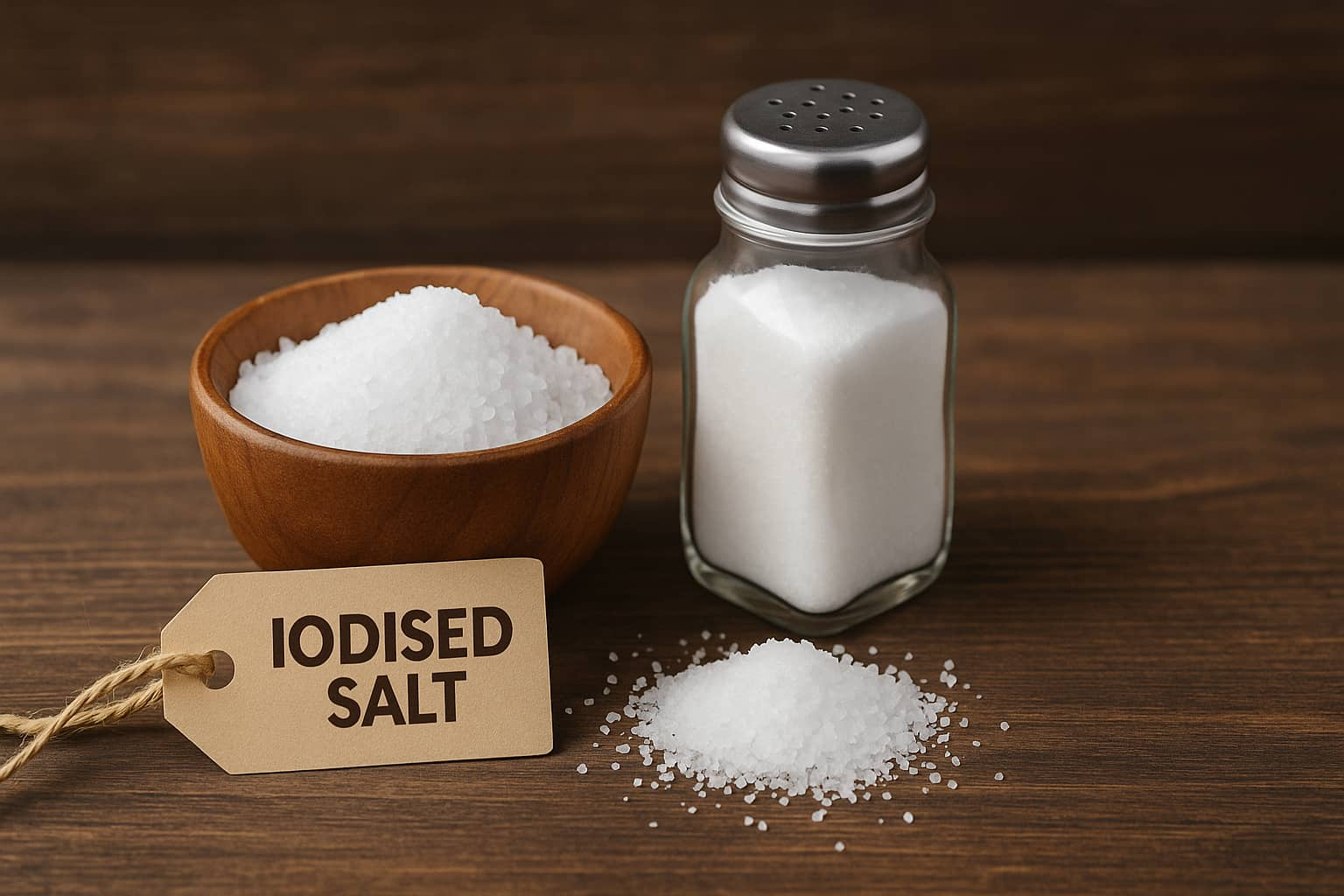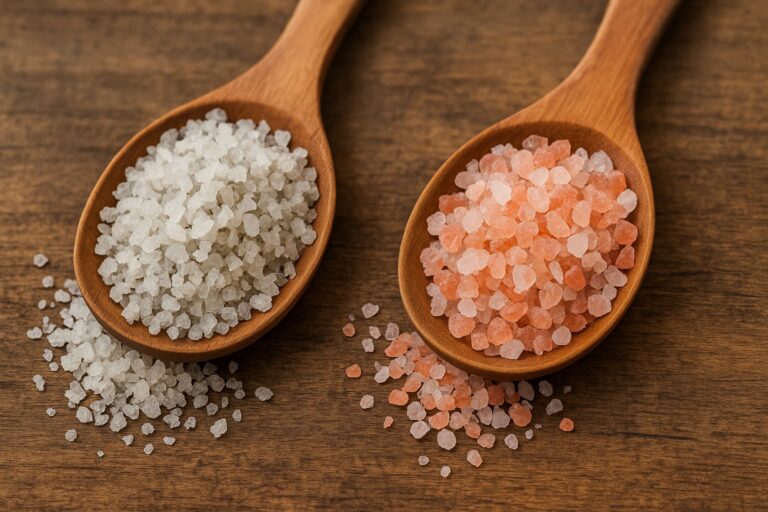
Iodised salt is a pantry staple in many homes, but not everyone is aware of how it differs from other types of salt. As a fortified product designed to address a common nutritional gap, iodised salt plays a unique role in public health and everyday cooking.
Table of contents
Why Was Iodine Added to Salt in the First Place?
Iodine is a trace mineral that the body needs to produce thyroid hormones. These hormones help regulate metabolism, energy levels and even brain development, especially during pregnancy and early childhood.
In the early 20th century, iodine deficiency was common in certain regions, leading to health issues such as goitre (swelling of the thyroid gland) and developmental delays. To combat this, governments around the world encouraged the addition of iodine to table salt, which was already widely used. This simple strategy made it easier for populations to get enough iodine through their diets.
How Is Iodised Salt Made?
Iodised salt begins as regular table salt, often refined to remove impurities and moisture. It is then fortified with a small, carefully controlled amount of iodine, typically in the form of potassium iodide or potassium iodate. A stabilising agent is also added to keep the iodine from evaporating or reacting with moisture.
The result is a salt that looks and tastes like ordinary table salt but with added nutritional benefit.
Is Iodised Salt Different From Sea Salt or Himalayan Salt?
Yes, there are a few key differences. Sea salt and Himalayan pink salt are minimally processed and naturally contain trace minerals. However, they typically have very low iodine levels unless the manufacturer adds it separately.
Iodised salt, on the other hand, is specifically fortified to address iodine deficiency. While it may not have the same mineral complexity or colour as Himalayan salt, it serves a distinct dietary purpose.
If you’re using only sea salt or Himalayan salt in your cooking, it’s worth considering other iodine sources, such as dairy, seafood or iodine supplements, depending on your diet and health needs.
Who Should Use Iodised Salt?
Most people benefit from small, regular amounts of iodine in their diet. Iodised salt can be especially helpful for:
- Pregnant individuals, to support foetal brain development
- Children, during periods of rapid growth
- People who do not regularly eat dairy, seafood or eggs
- Individuals living in areas where iodine deficiency is more common
That said, it’s also important not to overconsume iodine. Excessive intake can disrupt thyroid function just as much as too little can. Moderation is key, especially for those with thyroid conditions.
How to Store and Use Iodised Salt
To maintain its effectiveness, store iodised salt in a dry, airtight container away from heat and moisture. Iodine can break down over time, particularly if the salt is exposed to humidity or light.
Use iodised salt as you would regular table salt — in cooking, baking or seasoning — but be mindful of overall sodium intake, especially if you have high blood pressure or other heart concerns.
So, Is Iodised Salt Still Necessary Today?
In many parts of the world, iodised salt remains an easy and affordable way to prevent iodine deficiency. While diets have become more diverse and health awareness has grown, the use of iodised salt is still recommended by many health authorities.
If you’re unsure whether you’re getting enough iodine, a simple change like switching to iodised salt could be a smart step toward better nutrition.
Where to Buy Quality Salts
At SafeSalt, we offer a range of natural salts including Himalayan, Celtic and Dead Sea options, each with their own unique mineral profile. If you’re specifically looking to boost iodine intake, we recommend checking your current salt packaging to confirm if it’s iodised.
Explore our full collection of premium salts here or contact us if you have any questions about choosing the right product for your needs.






